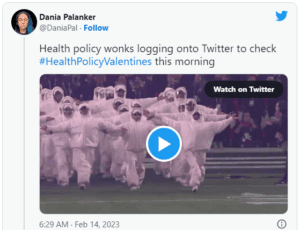The following is a guest article by Hannah Parrish, Marketing Executive at Alertive
Improving coordination among hospital staff helps reduce the risk of communication errors (70% of sentinel events are caused by poor communication), positively impacts patient wait times, and improves staff morale. The traditional practice of using bleeps to respond to emergency calls, often referred to as crash calls, is now being replaced by a digital alternative with the benefit of data to evidence the improvements that can be delivered.
The Shift from Bleeps to Digital Messaging
John Wintour-Pittom, Head of Ops for Telecoms at Imperial College Healthcare NHS Trust and Chelsea and Westminster NHS Foundation Trust, shares insights into their successful transition. He states, “In late November 22, we started dual running by broadcasting emergencies on Alertive and the legacy systems simultaneously. Alertive was faster at broadcasting and gave the Switchboard confidence that the roles required for the emergency were receiving messages through the acknowledgment feature.”
The dual-running phase, which continued until February 23 for one acute site and June 23 for the other six sites, marked the achievement of becoming bleep-free. Wintour-Pittom emphasizes the practical advantages, “Our Operators also love that if they ever had to evacuate, they pick up their departmental mobiles and can activate emergency teams from those devices on the move.”
Helen Pardoe, CCIO at The Princess Alexandra Hospital NHS Trust, emphasized the positive outcomes of removing all bleeps. “We have removed all of our bleeps, including for emergency alerts or 2222s. Since we have removed our bleeps entirely, we have had no significant incidents due to the change, and our on-call teams are better equipped to share information, respond faster, and are more organized.”
Challenges of Traditional Bleep Systems
Trusts that use bleeps for emergency calls experience several issues. Challenges associated with working effectively include delays experienced in assembling teams, quickly identifying and contacting specialists to consult remotely or to attend physically, and time spent coordinating how to transfer patients between departments.
Additionally, there are several system issues associated with using bleeps and long-range pagers, including the constant churn of devices between the hospital site and the supplier’s repair center, which leads to ever-decreasing reliability as units are simply patched up and frequent issues with transmitters often only being identified when outages occur. The lack of historical records of time stamps and limited reporting are also significant issues.
The lack of confidence in knowing if a required role has an operational device until a critical situation arises is a significant drawback. This knowledge can only be inferred by a lack of response, significantly affecting key targets such as maintaining 4-hour wait times.
The Digital Messaging Solution
In response to these challenges, several hospitals have implemented a digital messaging solution that not only addresses the limitations of traditional bleep systems but also enhances communication across the healthcare ecosystem. This solution, compatible with major platforms and available on both Trust and personal devices, ensures uniform communication among staff. It can be configured to adapt to Trust working practices, providing a full record of communications for each episode of care.
Embracing Innovation
Professionals like John Wintour-Pittom provide valuable insights. Reflecting on their journey, Wintour-Pittom challenges the notion that change is impossible, stating, “When we started our journey, there was a measure of it can’t be done…we are challenging that myth; it can be done.”
Another key figure in this wave of innovation is Phil Holland, CIO at The Princess Alexandra Hospital NHS Trust. Holland expresses the transformative impact on organizational culture, “It’s just been fabulous in terms of how it’s changed the organization’s culture and how we can interact with other people.” This culture shift signifies a fundamental change in how healthcare professionals collaborate and engage with each other.
The testimonials of industry leaders highlight the broader implications of adopting digital messaging solutions. The transition from traditional crash bleeps to digital messaging represents more than a technological upgrade—it signifies a cultural shift in how healthcare organizations approach communication.
Superior Performance and Benefits
Independent studies have underscored the superior performance of digital solutions compared to traditional bleep systems. With 99% of urgent alerts delivered within one minute and response times reduced to 2 minutes at a major London NHS Trust. The benefits extend beyond speed; Hull University Teaching Hospitals NHS Trust reported a 77% reduction in clinical incidents and a consistent 99.999% uptime, showcasing the reliability and effectiveness of the digital alternative.
Looking Ahead
As hospitals increasingly recognize the limitations of traditional crash bleep systems, the digital transformation heralds a new era in communication. The outlined benefits merely scratch the surface, signaling the beginning of a comprehensive shift towards more efficient and reliable communication methods in healthcare.
 About Hannah Parrish
About Hannah Parrish
Hannah Parrish, Marketing Executive at Alertive, champions the provision of a secure and effective communication system for healthcare professionals. Her pivotal role involves promoting Alertive’s secure digital messaging platform, contributing to streamlined and efficient communication in the healthcare sector.
Get Fresh Healthcare & IT Stories Delivered Daily
Join thousands of your healthcare & HealthIT peers who subscribe to our daily newsletter.




